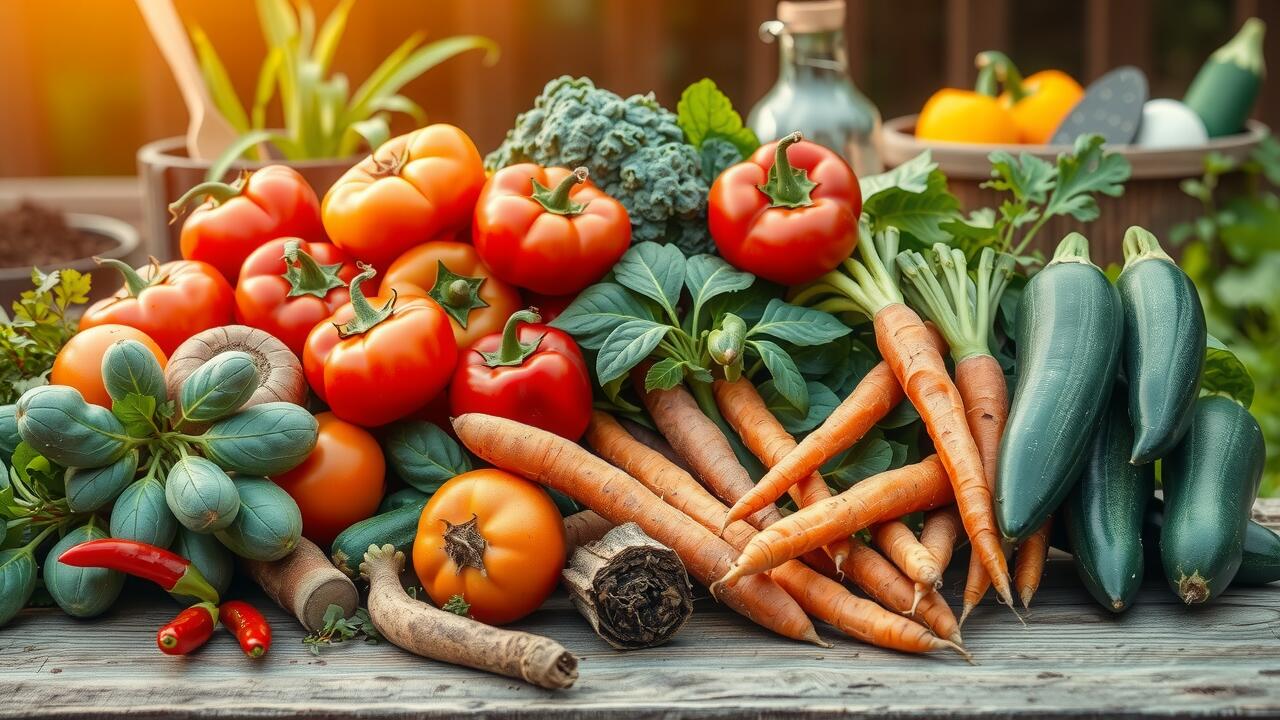Lettuce
This leafy green is popular among gardeners for its rapid growth and adaptability to various climates. Lettuce thrives in cooler temperatures, making it an excellent choice for early spring or fall planting. With consistent moisture and well-drained soil, growers often see a fast turnaround from seed to harvest, typically within 30 to 70 days depending on the variety.
Different types of lettuce offer diverse textures and flavors to suit any palate. Leaf, romaine, and butterhead varieties are among the favorites for both home cooks and gardeners alike. Techniques such as succession planting can extend the growing season, ensuring a steady supply. Proper spacing also promotes healthy growth and minimizes the risk of disease, contributing to a bountiful harvest.
Varieties and Harvesting Techniques
Several popular varieties of lettuce are ideal for organic cultivation. Leaf lettuce tends to grow quickly and can be harvested several times throughout the season. Romaine offers a heartier leaf structure that withstands heat better than some other types. Butterhead has a rich, buttery texture and flavor that many gardeners appreciate. Understanding the specific needs of each variety ensures a successful yield. Timing plays a crucial role.
Harvesting techniques vary depending on the type of lettuce grown. For leaf varieties, cutting leaves selectively encourages regrowth and prolongs the harvesting period. A clean cut just above the crown allows for further development. Romaine and butterhead types can be harvested as whole heads. This method requires careful handling to avoid damaging surrounding plants. Harvesting in the early morning or late afternoon helps retain moisture and freshness. Proper techniques lead to better quality produce and enhance the overall gardening experience.
Herbs
Growing herbs can be a delightful experience for both novice and seasoned gardeners. They require minimal space and thrive in various conditions, making them an excellent choice for organic cultivation. Herbs like basil, parsley, and cilantro can be sown directly into the soil or started indoors, providing flexibility in their growing methods. Their rapid growth cycle rewards gardeners with fresh flavors that can be used in a multitude of dishes.
Many herbs are also naturally pest-resistant, reducing the need for chemical interventions. Some popular options include rosemary, thyme, and mint, which can flourish with little care. These herbs can be harvested continuously, encouraging home gardeners to enjoy their aromatic qualities while enhancing culinary creations. Additionally, growing herbs can attract beneficial insects, making for a more dynamic gardening ecosystem.
Best Herbs for Organic Cultivation
Basil is a top choice for organic gardens, valued for its aromatic leaves and adaptability. It thrives in warm weather and can be grown in pots or directly in the garden. Regular pruning encourages bushier growth and enhances the flavor profile. Its versatility extends to various dishes, making it a kitchen staple.
Another excellent option is parsley, which is not only hardy but also rich in vitamins. It can be sown in early spring or fall, often thriving in partial shade. The key to success with parsley is consistent watering, which helps maintain the tenderness of the leaves. This herb serves both culinary and decorative purposes, adding a fresh green touch to any garden.
Beans
Beans are a fantastic choice for organic gardening due to their ability to thrive in diverse climates and soil types. They are nitrogen-fixing plants, meaning they enrich the soil by converting atmospheric nitrogen into a form that is accessible to other plants. This natural process supports overall soil health and reduces the need for chemical fertilizers, making beans an ideal selection for sustainable practices. Additionally, most bean varieties grow rapidly, providing a quick harvest for gardeners looking for fast returns on their effort.
These legumes come in various types, including bush beans and pole beans, each offering unique growth habits and yields. Companion planting can enhance the growth of beans and nearby crops. Pairing them with corn or squash can create a thriving ecosystem. This method promotes better biodiversity and pest control, contributing to a holistic gardening approach that encourages healthy plant interactions.
Companion Planting with Beans
Planting beans alongside certain crops can enhance the growth and health of both plants. This method, known as companion planting, allows beans to fix nitrogen in the soil, enriching it and benefiting neighboring vegetables. Corn and squash are two excellent partners. The tall corn provides support for climbing bean varieties, while the broad leaves of squash offer shade and suppress weeds, creating a symbiotic garden environment.
In addition to corn and squash, beans also thrive when planted with cucumbers and peppers. The dense foliage of beans helps to protect these plants from pests, while cucumbers can benefit from the nitrogen fixed by the beans. This strategy promotes biodiversity in the garden and can lead to higher yields. Practicing companion planting with beans not only supports the growth of the crops involved but also fosters a healthier ecosystem in the garden.
FAQS
What are the easiest crops to grow organically?
Some of the easiest crops to grow organically include lettuce, various herbs, and beans. These plants are typically fast-growing, require less maintenance, and can thrive in a range of conditions.
How long does it take to grow lettuce organically?
Lettuce can be grown organically in as little as 30 to 60 days, depending on the variety. Fast-growing types, like leaf lettuce, generally reach maturity more quickly than head varieties.
What are the best herbs for organic cultivation?
Some of the best herbs for organic cultivation include basil, parsley, cilantro, and mint. These herbs are relatively low-maintenance and can be grown both indoors and outdoors.
Can beans be grown alongside other plants?
Yes, beans are excellent companions for many plants. They can fix nitrogen in the soil, benefiting nearby crops. Common companion plants for beans include corn, squash, and cucumbers.
What is the advantage of growing crops organically?
Growing crops organically helps to promote biodiversity, improves soil health, and reduces environmental impact. Additionally, organic crops are often free from synthetic pesticides and fertilizers, making them safer for consumption.
